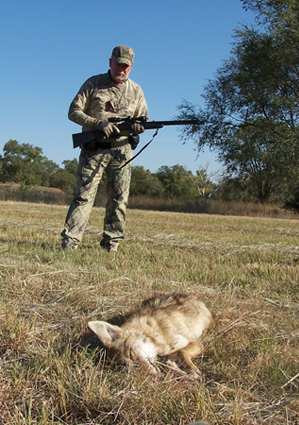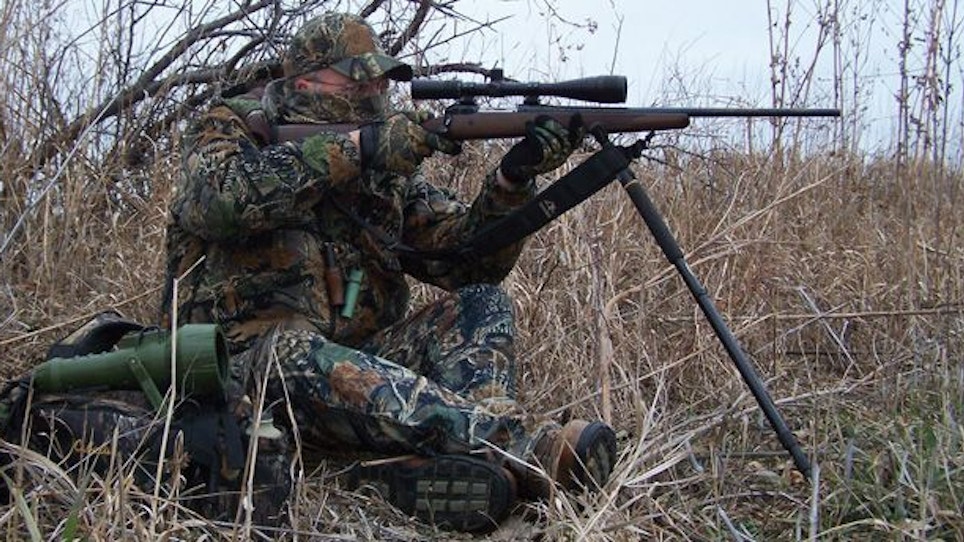Besides the normal struggle for food and shelter, a coyote’s daily life is constantly fraught with territorial challenges, quarrels over dominance, environmental threats, disease, and hunter peril. Their survival is constantly challenged, but in spite of all the threats they have flourished.
Coyote learn quickly and have long memories. Older coyotes are masters at survival and teach each other well. Because the coyote is so intelligent, it has a longer learning and maturity curve. Coyote have a relatively complex social life. The more you understand that social life, the better your chances.
Coyote are territorial. The mating, or alpha, pair might have juveniles in its family pack, but juveniles do not engage in breeding for the first year. The exception to this rule is caused by a radical disruption of the family unit. Radical disruption can be caused by death, disease, or wildly fluctuating environmental change.
If either of the alpha pair is killed, especially the female, juvenile females may become breeders. A male that is at least a year old can replace the alpha male. Several pairs can also establish a smaller territory of control with more litters whelped within the traditional 8 to 15 square miles of territory normally controlled by an alpha pair with an intact family unit. If the alpha female is killed, subordinate females become breeders and find mates. In less disturbed conditions, subordinates may remain in the family pack for a longer period of time. This is part of the reason heavy hunting and trapping does not reduce the coyote population for long. In fact, hunting and trapping may actually encourage short term growth of a coyote population. This is especially true in areas where there is plenty of food and habitat.
After a radical disruption of a family unit, outside male coyote will infiltrate the area earlier than normal. Even though pups establish dominance over each other early in life, this dominance can be very fluid and change as litter mates mature or die. It is estimated by some researchers that 30 to 70 percent of coyote will not live to be a year old. (Kansas State University – 1968), (Chamberlain, Leupold) (Nebraska GPC) (Sacks, Bannashch, Chomel, Bruno) (Feldhamer, Thompson, Chapman -2003).
 When male and female coyote are ejected from the pack they become nomads. Even in strong family units nomads develop quickly, as young males are forced out in the late summer and early fall. These nomads move quickly through pack territories or exist in an area at the pleasure of the alphas. Nomads may migrate over 100 miles before they find a territory with no competition and begin their own family unit. These coyotes can be thought of as fringe dwellers. They dwell on the edges of alpha territories and do not challenge the alpha family status until much older and stronger.
When male and female coyote are ejected from the pack they become nomads. Even in strong family units nomads develop quickly, as young males are forced out in the late summer and early fall. These nomads move quickly through pack territories or exist in an area at the pleasure of the alphas. Nomads may migrate over 100 miles before they find a territory with no competition and begin their own family unit. These coyotes can be thought of as fringe dwellers. They dwell on the edges of alpha territories and do not challenge the alpha family status until much older and stronger.
Alpha unions last for several years and since only a few coyote live past 3 or 4 years of age due to disease, hunting and bad luck. However, there is a fairly regular turnover and testing of territory. Where there is frequent disruption, both turnover and territorial challenge will be greater.
In other words, you can shoot and trap every coyote there is on a piece of property and that population can be fully restored or even greater within a year because of territorial pressure from new alpha couples.
Good coyote habitat will remain good hunting ground season after season. Scouting and finding good ground is a prerequisite for successful calling. When ground is hunted out, wait a few months for new residents to move in. If the food and cover is there, a coyote will find it.
References
Internet References:
Chamberlain, Michael J., Leopold, Bruce D. “Survival and Cause-specific Mortality of Adult Coyotes (Canis latrans) in Central Mississippi"
School of Forestry, Wildlife, and Fisheries, Louisiana State University, Baton Rouge 70803
Department of Wildlife and Fisheries, Box 9690, Mississippi State University, Mississippi State 39762.
Nebraska Game and Parks Commission – “Coyote Mortality”
Servello, Fredrick A.; Edwards, Thomas L.; Constantine, Bernice U. “Coyote, Managing Coyote Problems in Kentucky”
Minnesota DNR – “Coyote”
Sacks, Benjamin N., Bannashch, Danica L., Chomel, Bruno B. Earnest, Holly B. “Coyotes Demonstate How Habitat Specialization by Individuals of a Generalist Species Can Diversify Populations in a Heterogeneous Ecoregion”
Nova Scotia – Hall, Ross. “When Coyotes Become a Nuisance”






